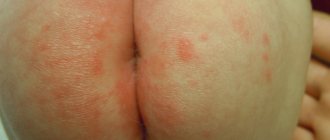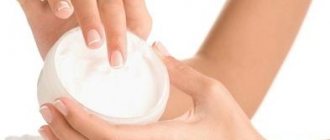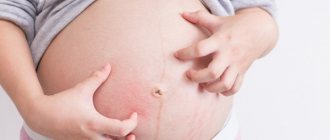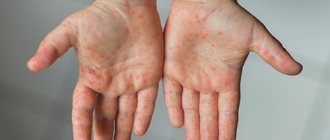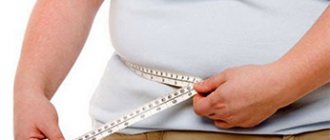How allergies develop
An allergy is an atypical response of the immune system to foreign substances (allergens), when a special inflammatory reaction is triggered in the body and its own tissues are damaged by its own antibodies.
The mechanism of development of an allergic reaction occurs in 3 stages:
- First Contact and entry of an allergen into the body for the first time. Immune cells recognize them as a foreign object and begin the process of producing antibodies. In turn, the antibodies attach to the surface of “mast” cells located under the mucous membranes and epithelium and “freeze” in anticipation of new contact with the allergen, which can last more than a year.
- Second: Secondary entry of the allergen into the body, where it binds to antibodies that are localized on the walls of “mast” cells, which triggers the start of the “mast” cells and they begin to secrete biologically active substances (histamine and others). These biologically active substances are inflammatory mediators (support inflammation), cause vasodilation, increased permeability of the vascular wall, swelling and other signs of allergy.
- Third, as a result of the described effects of inflammatory mediators, swelling, redness and itching appear - direct signs of inflammation. In extreme cases, when an allergen enters the bloodstream, the blood vessels greatly dilate, which leads to a sharp drop in blood pressure - anaphylactic shock.
Sources
- Roff AJ., Morrison JL., Tai A., Clifton VL., Gatford KL. Maternal asthma during pregnancy and risks of allergy and asthma in progeny: a systematic review protocol. // JBI Evid Synth - 2022 - Vol - NNULL - p.; PMID:33795583
- Quezada-Pinedo HG., Mensink-Bout SM., Reiss IK., Jaddoe VWV., Vermeulen MJ., Duijts L. Maternal iron status during early pregnancy and school-age, lung function, asthma, and allergy: The Generation R Study . // Pediatr Pulmonol - 2022 - Vol - NNULL - p.; PMID:33657279
- Ogawa K., Pak K., Yamamoto-Hanada K., Ishitsuka K., Sasaki H., Mezawa H., Saito-Abe M., Sato M., Yang L., Nishizato M., Konishi M., Sago H ., Ohya Y. Association between maternal vegetable intake during pregnancy and allergy in offspring: Japan Environment and Children's Study. // PLoS One - 2022 - Vol16 - N1 - p.e0245782; PMID:33507986
- Tanaka K., Okubo H., Sasaki S., Arakawa M., Miyake Y. Maternal caffeine intake during pregnancy and risk of food allergy in young Japanese children. // J Paediatr Child Health - 2022 - Vol - NNULL - p.; PMID:33464698
- Wolfson AR., Mancini CM., Banerji A., Fu X., Bryant AS., Phadke NA., Shenoy ES., Arman W., Zhang Y., Blumenthal KG. Penicillin Allergy Assessment in Pregnancy: Safety and Impact on Antibiotic Use. // J Allergy Clin Immunol Pract - 2022 - Vol9 - N3 - p.1338-1346; PMID:33212237
- Zhang HJ., Dong XL., Zhang YF., Fang YF., Zhang HY. . // Zhongguo Dang Dai Er Ke Za Zhi - 2022 - Vol22 - N11 - p.1221-1225; PMID:33172559
- Mensink-Bout SM., Voortman T., Dervishaj M., Reiss IKM., De Jongste JC., Jaddoe VWV., Duijts L. Associations of Plasma Fatty Acid Patterns during Pregnancy with Respiratory and Allergy Outcomes at School Age. // Nutrients - 2022 - Vol12 - N10 - p.; PMID:33036333
- Tuokkola J., Lamminsalo A., Metsälä J., Takkinen HM., Tapanainen H., Åkerlund M., Niinistö S., Toppari J., Ilonen J., Veijola R., Knip M., Kaila M., Virtanen SM . Maternal antioxidant intake during pregnancy and the development of cows' milk allergy in the offspring. // Br J Nutr - 2022 - Vol - NNULL - p.1-8; PMID:32943116
- Bonadonna P., Mauro M., Preziosi D., Pravettoni V. Pregnancy and Hymenoptera venom allergy. // Curr Opin Allergy Clin Immunol - 2020 - Vol20 - N5 - p.465-469; PMID:32769711
- Venter C., Agostoni C., Arshad SH., Ben-Abdallah M., Du Toit G., Fleischer DM., Greenhawt M., Glueck DH., Groetch M., Lunjani N., Maslin K., Maiorella A. , Meyer R., Antonella M., Netting MJ., Ibeabughichi Nwaru B., Palmer DJ., Palumbo MP., Roberts G., Roduit C., Smith P., Untersmayr E., Vanderlinden LA., O'Mahony L Dietary factors during pregnancy and atopic outcomes in childhood: A systematic review from the European Academy of Allergy and Clinical Immunology. // Pediatr Allergy Immunol - 2022 - Vol31 - N8 - p.889-912; PMID:32524677
Factors causing allergies
Factors that cause allergies (allergens) for allergy sufferers can be completely harmless substances that healthy people do not attach importance to. First of all, allergies can be triggered by pollen, hair and fluff of pets, dust that accumulates in carpets, curtains, pillows (it is in it that microscopic mites that provoke allergies are found).
Some foods can also cause allergies: citrus fruits, seafood, exotic fruits, red vegetables, fruits and berries. Poisonous insects are also dangerous for allergy sufferers: bees, wasps, bumblebees and others. In addition, allergies can result from living in an environmentally unfavorable area, exposure to industrial hazards, household chemicals, medicinal and decorative cosmetics, and, of course, medications.
And, speaking of allergies, we must not forget about the influence of severe stress and psycho-emotional experiences on an “inadequately tuned” immune system.
Physiological changes in the skin of the palms during pregnancy
An increase in the amount of female sex hormones in the blood of pregnant women can lead to the appearance of erythematous rashes and telangiectasias on the woman’s hands.
- Telangiectasias are expansions of the capillary network in the superficial layers of the skin. These rashes may resemble stars, dots, or dashes in appearance. These rashes can be either single or multiple.
- Erythema is persistent redness of the skin of the hands. After childbirth it goes away spontaneously.
If these symptoms are accompanied by jaundice of the skin, it is necessary to examine the condition of the pregnant woman’s liver. In this case, it is necessary to prescribe appropriate treatment.
This article does not constitute medical advice and should not serve as a substitute for consultation with a physician.
The effect of allergies on the fetus
Allergies, in turn, are not dangerous for the unborn baby due to their manifestations, but are fraught with indirect complications:
- allergy symptoms deplete the physical strength of the pregnant woman’s body and weaken the already suppressed immune system, which can affect the growth and development of the fetus (the birth of a low-weight and weak child);
- taking some antihistamines worsens the condition of fetoplacental blood flow, which disrupts the supply of nutrients and oxygen to the fetus;
- allergens and antibodies to them do not penetrate the placental barrier, but it is possible that the child will develop allergies after birth (hereditary predisposition).
Atopic dermatitis of pregnancy
Authors : European Academy of Dermatology and Venereology
What is atopic dermatitis of pregnancy?
Atopy
- this term characterizes a predisposition to the development of atopic dermatitis, bronchial asthma and / or allergic rhinitis.
Atopic eczema
is an inflammation of the skin that causes dry and itchy skin. It affects any area of the skin, including the face, but the most common places are the elbows, knees, wrists and neck. It occurs with equal frequency in both women and men and usually begins in the first weeks or months of life. It is most common in children, affecting at least 10% of infants. It may persist in adults or, after an asymptomatic period, may return in adolescence and adulthood. Many environmental factors worsen eczema skin. These include elevated temperature, dust, contact with irritants (such as soap or detergents), stress and infections. Eczema also worsens during pregnancy (see below).
Atopic dermatitis of pregnancy
occurs in women who already suffer from eczema, and causes an exacerbation of the disease (in approximately 20% of patients with atopic dermatitis in pregnant women). In addition, there is a group of women in whom the first manifestation of this disease began during pregnancy (the remaining 80% of cases include them). They often have more sensitive skin with a tendency to dryness and irritation (so-called atopic diathesis), and it is also possible that one of their relatives suffers from atopic diseases (asthma, allergic rhinitis, atopic dermatitis).
Atopic dermatitis of pregnant women usually develops during the first half of pregnancy (in 75% - before the third trimester). DPA was previously known as prurigo of pregnancy, but this definition does not include all types of skin changes that can occur with this type of disease. Therefore this name is no longer used.
What is the cause of atopic dermatitis in pregnancy?
The reason is not completely clear. Atopy is a disease that is hereditary in nature (see below) and manifests itself at the genetic level. Atopic people have an overactive immune system and a tendency to skin inflammation (redness and erosion). The protective skin barrier in such people does not work as it should, and therefore the skin is prone to dryness and the development of infections. During pregnancy, the immune system changes significantly, which can lead to worsening of existing dermatitis or the appearance of the first signs of developing atopic dermatitis. These changes usually resolve after childbirth; although recurrence of the disease may occur in some women during a second pregnancy.
Does atopic dermatitis run in families?
Yes. Atopic eczema (as well as asthma or hay fever) tends to run in families of people with these conditions. If one or both parents are affected by eczema, asthma or hay fever, it is likely that their children will be prone to these types of diseases. Also, due to heredity, your sister or mother may also have developed atopic dermatitis during pregnancy. There is a high chance of developing atopic dermatitis during subsequent pregnancies.
What are the symptoms of atopic dermatitis in pregnancy and what does it look like?
The main symptom is severe itching, which can cause discomfort during sleep. The importance of the skin rash depends on the type of DBA. If you are suffering from a worsening of existing eczema, it is likely that your skin will be red and dry. If your eczema is active (during a flare-up), you may develop small, clear blisters on your hands and feet, or your skin may become weepy. In areas of the skin that are subjected to constant scratching, the skin can become rough, so-called lichenification occurs. If you first develop atopic dermatitis during pregnancy, the rash will appear in a milder form. Two-thirds of patients suffer from red, itchy, scaly patches (the so-called eczematous type of DBA). The focus of the lesion, as with atopic eczema, is the neck, chest, elbow bends and popliteal fossae. Another third of patients have small nodules (1 - 2 mm), or somewhat larger plaques (5 - 10 mm), sometimes with the presence of small open wounds (excoriations that appear as a result of scratching the skin) on the abdomen, back and limbs (the so-called " pruritus").
How to diagnose atopic dermatitis in pregnancy?
It is usually easy to establish a diagnosis for exacerbation of existing eczema based on the characteristic clinical picture and taking into account the medical history. However, when atopic dermatitis first appears, the diagnosis is more difficult to establish. It may be confused with a skin condition such as scabies or with skin rashes caused by drug allergies and other specific skin conditions that occur during pregnancy. It is best to tell your family doctor about atopic dermatitis that you or your family members have, as well as a predisposition to other atopic diseases (so-called atopic diathesis, see above).
Can atopic dermatitis of a pregnant woman affect the unborn child?
No, the mother's rash does not cause any harm to the baby. However, against the background of atopic dermatitis, a child may develop a genetic predisposition to atopic diseases (eczema, asthma or hay fever).
Can atopic dermatitis of pregnancy be cured?
Not completely; due to a genetic predisposition to this disease. But there are many ways to control it. In particular, the first manifestations of atopic dermatitis are highly treatable and easily controlled.
How to treat atopic dermatitis during pregnancy?
The main goal of treatment is to relieve itching and reduce inflammation and redness of the skin. It is important that during pregnancy, medications are used that are completely safe for the health of the mother and child. The most commonly used moisturizers, steroid creams or ointments.
Moisturizers (softening creams and ointments)
can be used several times a day to prevent dry skin. There are many of them, so it is important to choose exactly the product that suits you. Moisturizing bath products and using soap substitutes provide relief in many cases. It is not recommended to take baths or showers too often, as this will dry out the skin.
Steroid creams or fatty ointments containing steroids
often necessary to reduce symptoms. They should only be applied to affected areas of the skin. The weakest (eg hydrocortisone) to moderate strength steroid creams should be used. The amount of cream should be minimal. Ideally, 1 - 2 small tubes (15 - 30 g) will be enough. However, in more severe cases, using a stronger steroid cream or ointment in larger quantities is always preferable to taking steroid tablets.
Prescribing steroid tablets
is the last step to control the condition, they should only be taken in small doses and for a short period of time. Prednisolone is a drug prescribed during pregnancy for severe flare-ups of eczema.
Some patients may also benefit from additional treatments, such as ultraviolet rays (UVB), which are considered safe during pregnancy.
Antibiotics
may be necessary if you get wet. This may mean that the eczema is infected with bacteria.
Avoid using creams or ointments that suppress the immune system, such as tacrolimus (Protopic ® ) and pimecrolimus (Elidel ® ), as they are not licensed for use during pregnancy. Although the informal use of these drugs on limited areas of the skin is believed to not cause harm to the unborn baby, no serious research has been conducted in this area.
In addition, antihistamines can relieve itchy skin. The following are considered safe medications during pregnancy:
- Sedatives (calming): clemastine, dimethindene, chlorpheniramine.
- Non-sedative: loratadine, cetirizine.
How safe is this treatment for the health of mother and child?
Is special supervision necessary? Using mild to moderately potent steroid creams or ointments in moderation is safe during pregnancy. Strong steroid creams or ointments may affect fetal development. Children in these cases may be born underweight, especially when steroid creams or ointments are used in large doses (more than 50 g - 1/2 large tube per month, or more than 200 - 300 g - 2 - 3 large tubes per month). throughout the entire pregnancy). Short courses (about 2 weeks) of prednisolone (a steroid tablet), which is the drug of choice among tablet steroid hormones during pregnancy, usually do not harm the baby. However, oral use of large doses (more than 10 mg per day) of prednisolone for a longer period (more than 2 weeks) during the first 12 weeks of pregnancy can lead to the development of a cleft lip or cleft palate in the baby. Long-term treatment with steroid tablets (which is usually not necessary for DBA) may also affect the overall development of the child, particularly fetal growth.
When using steroid tablets, the mother is at risk of developing diabetes (high blood sugar) and hypertension (high blood pressure). Therefore, antenatal clinics should carry out continuous blood pressure measurements and urine tests, while ultrasound can detect abnormalities in the baby's development.
Is normal childbirth possible?
Yes.
Can women with atopic dermatitis of pregnancy breastfeed?
Yes. Even when treated with steroid tablets, a woman can breastfeed her baby, since only a small amount of steroids passes into breast milk. However, these women are at risk of developing nipple eczema due to increased skin sensitivity. Therefore, the use of moisturizing creams for this part of the body is recommended. If these are steroid creams, then before breastfeeding, it should be washed thoroughly to prevent it from getting into the baby's mouth.
Although every effort has been made to ensure that the information in this information leaflet is accurate, not every treatment described is suitable or effective for all patients. Your healthcare provider will be able to provide you with more detailed information.
The general information in this booklet has been taken from the patient information leaflet (BAD). This brochure was prepared by the Skin Diseases in Pregnancy Working Group of the European Academy of Dermatology and Venereology (EADV) and does not necessarily represent the official views of the Academy.
Source
published 16/03/2015 13:04 updated 23/09/2017 — Pregnancy, Obstetrics, gynecology, mammology, Dermatology
Allergy treatment
It’s worth mentioning right away that allergies cannot be cured, you can only stop its acute manifestations. Most antihistamines are contraindicated during pregnancy, and those that can be taken can only be decided by a doctor, provided that the benefits of taking anti-allergy drugs outweigh the possible risk to the fetus. Therefore, you should not self-medicate an allergic reaction, especially expectant mothers.
Ideally, at the stage of pregnancy planning, a woman with allergies should visit an allergist in order to conduct a special diagnosis for potential allergens and, if possible, avoid contact with them.
But what to do if acute allergosis develops during pregnancy (for example, urticaria, rhinitis, conjunctivitis)? First of all, it is recommended:
- avoid contact with the suspected allergen;
- call a doctor;
- take a suprastin tablet (the drug is contraindicated in the first trimester).
Allergy prevention
Disease, and especially allergies, are easier to prevent than to treat. Therefore, pregnant women with a tendency to allergic reactions are advised to follow a number of rules:
- ventilate the room as often as possible, carry out wet cleaning daily, knock out potential “dust collectors” weekly: pillows, blankets, carpets, etc.;
- exclude potentially allergenic foods from the diet (honey, nuts, seafood, citrus fruits, tomatoes, raspberries and strawberries, milk and cheese, processed foods, spicy, salty and pickled foods; chocolate);
- get rid of pets during pregnancy (give them to loved ones) and minimize contact with them;
- give up bad habits, especially smoking;
- Do not use new (untried before pregnancy) cleaning products, detergents and skin care products.


